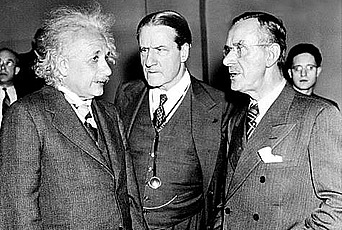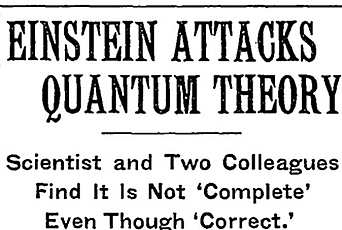
How Einstein and Schrödinger Conspired to Kill a Cat
Of all the bizarre facets of quantum theory, few seem stranger than those captured by Erwin Schrödinger’s famous fable about the cat that is neither alive nor dead. It describes a cat locked inside a windowless box, along with some radioactive material. If the radioactive material happens to decay, then a device releases a hammer, which smashes a vial of poison, which kills the cat. If no radioactivity is detected, the cat lives. According to proponents of the theory, before anyone opened the box to check on the cat, the cat was neither alive nor dead; it existed in a strange, quintessentially quantum state of alive-and-dead.
Today, in our LOLcats-saturated world, Schrödinger’s strange little tale is often played for laughs, with a tone more zany than somber. It has also become the standard bearer for a host of quandaries in philosophy and physics. In Schrödinger’s own time, Niels Bohr [former Member at IAS on many occasions], and Werner Heisenberg proclaimed that hybrid states like the one the cat was supposed to be in were a fundamental feature of nature. Others, like Albert Einstein [Professor (1933–55) in the School of Mathematics], insisted that nature must choose: alive or dead, but not both.
Although Schrödinger’s cat flourishes as a meme to this day, discussions tend to overlook one key dimension of the fable: the environment in which Schrödinger conceived it in the first place.
Read more from Nautilus.


